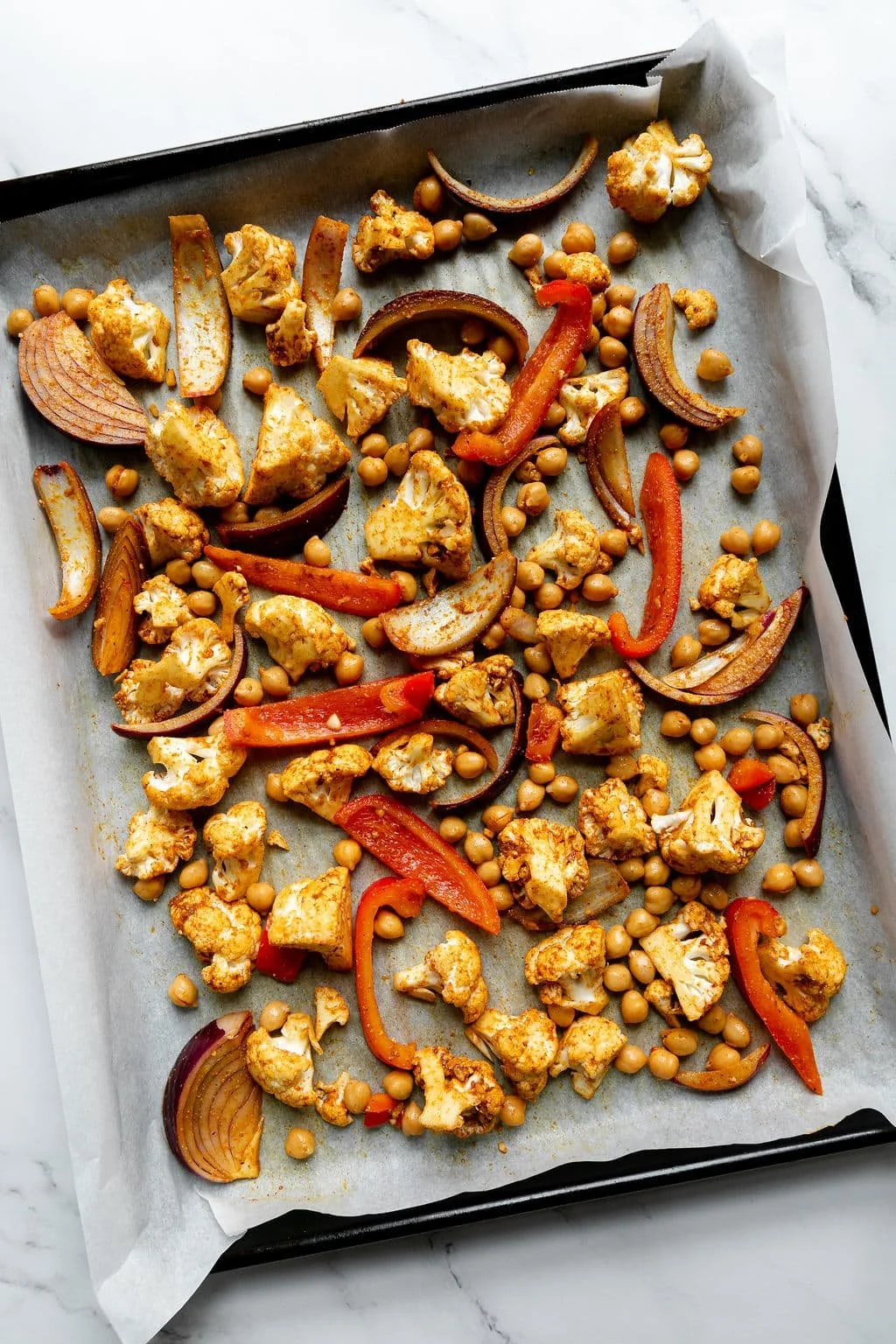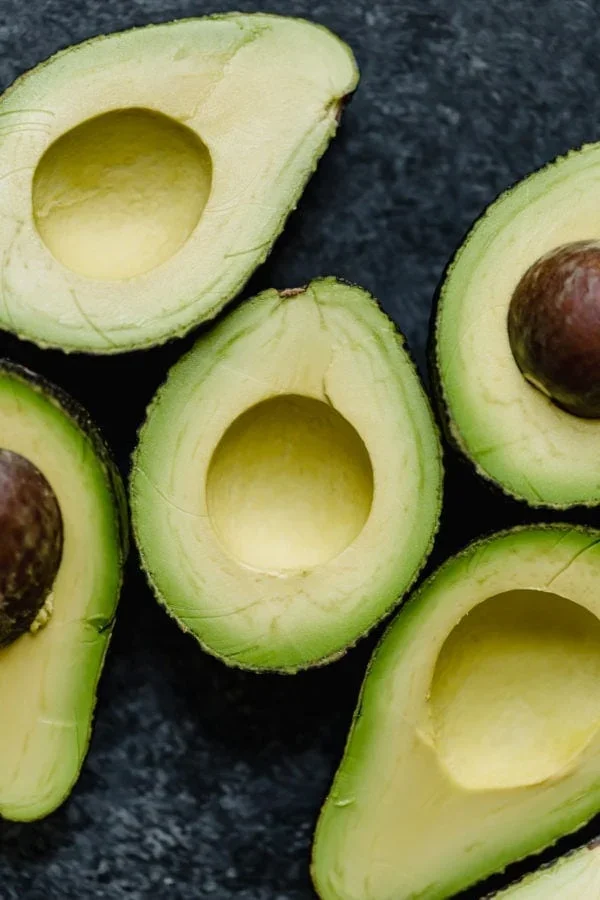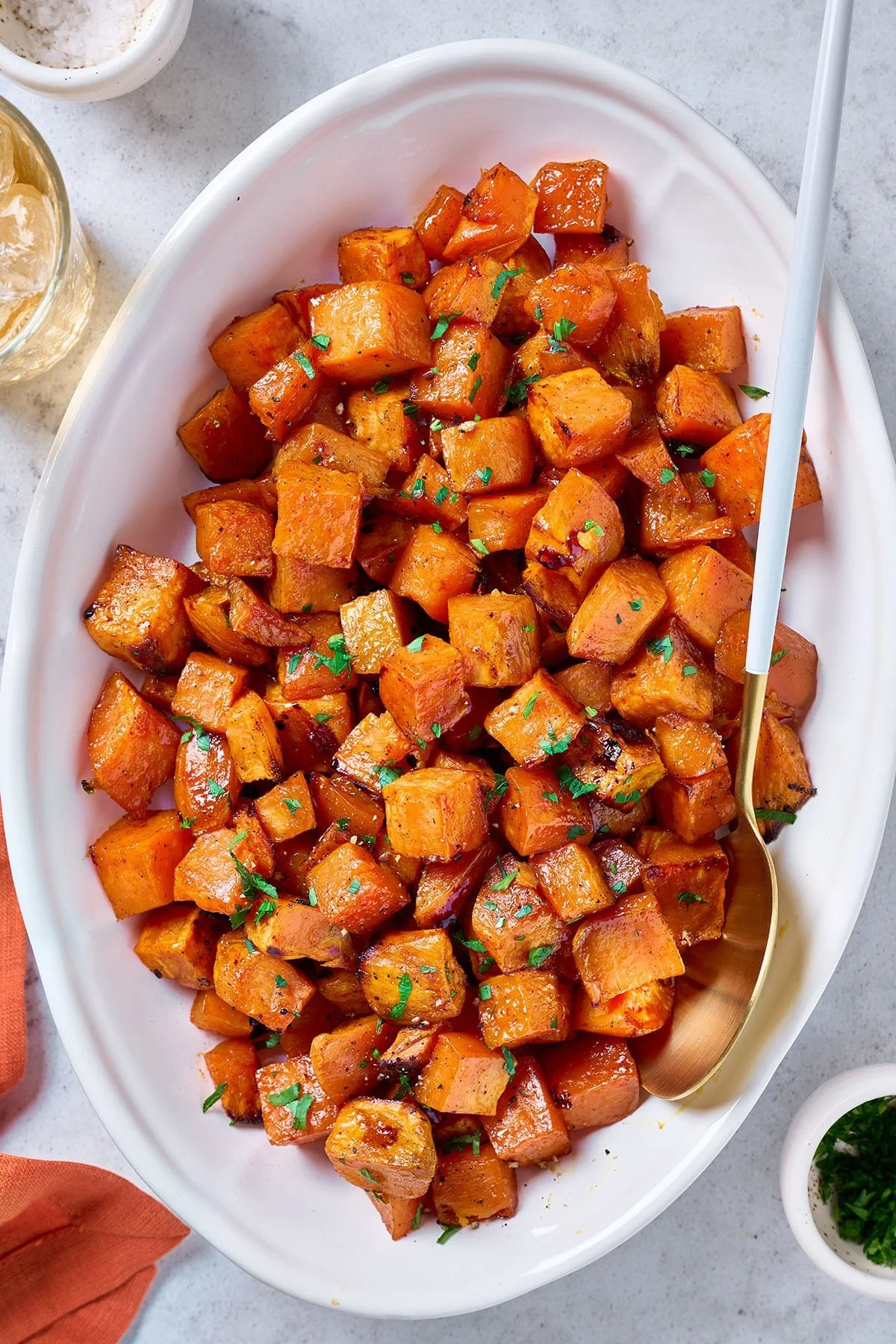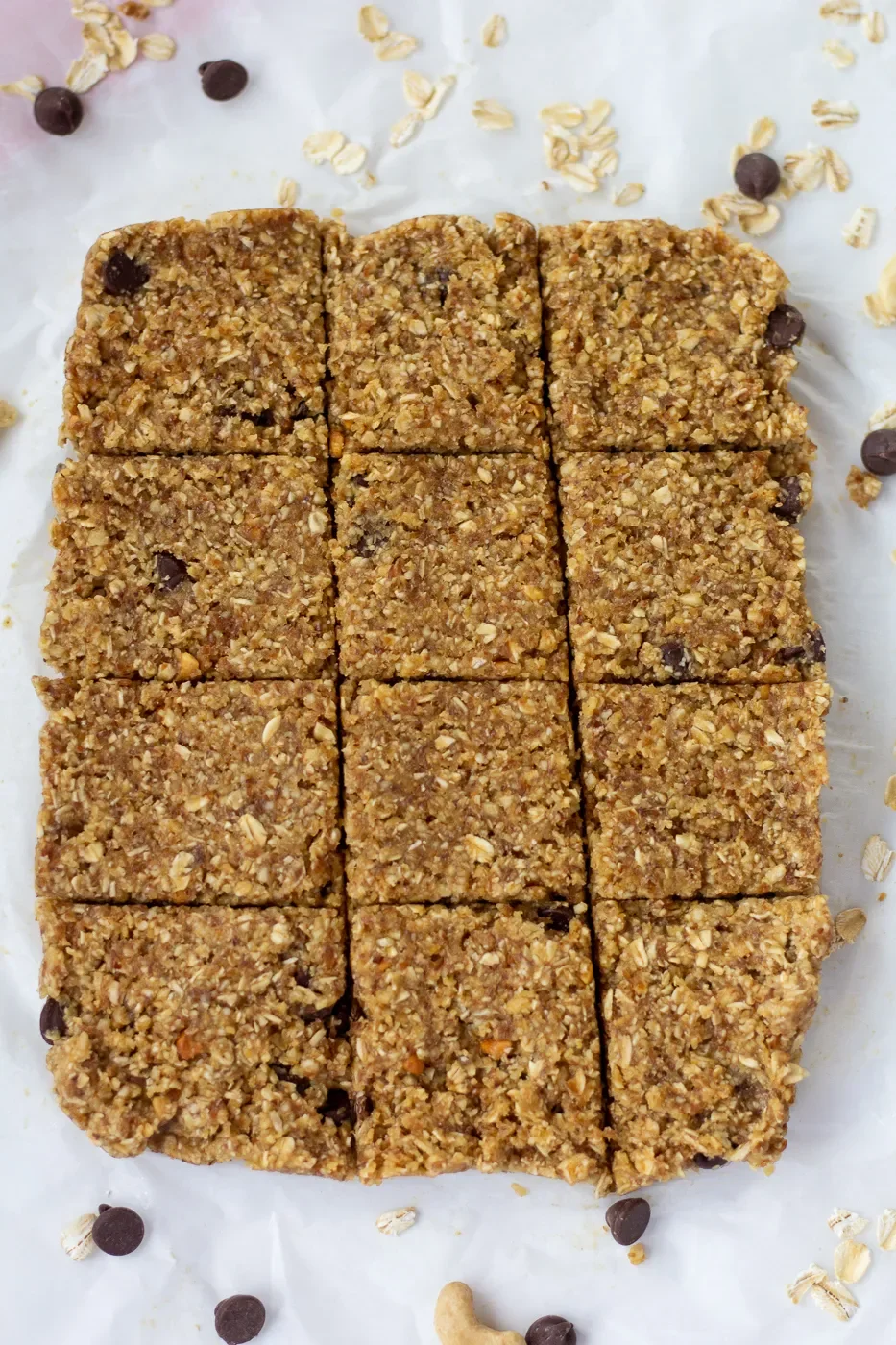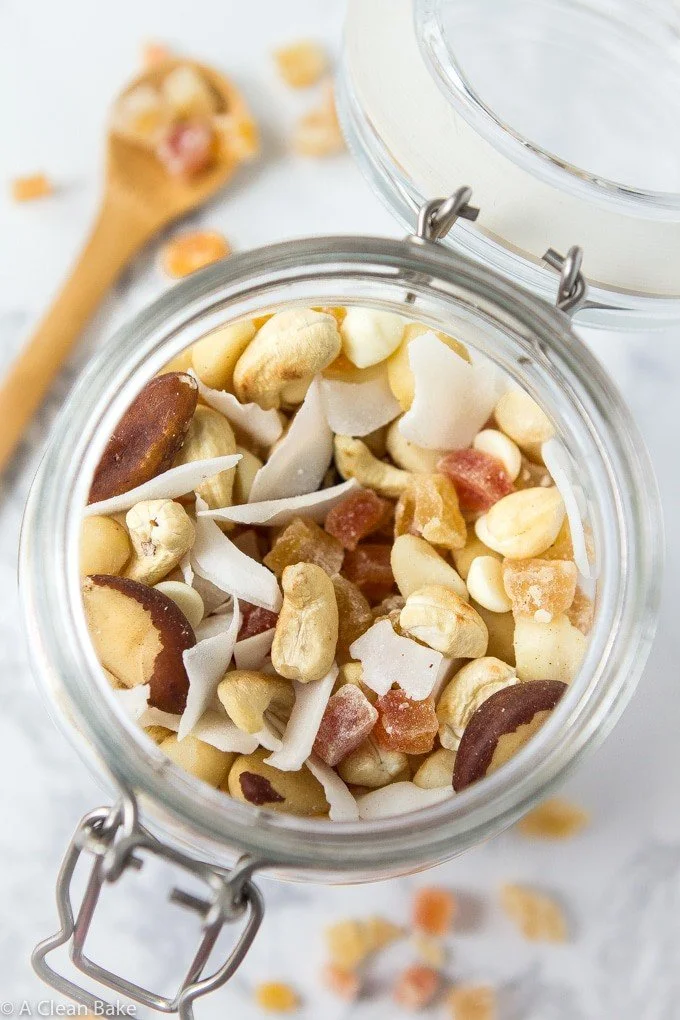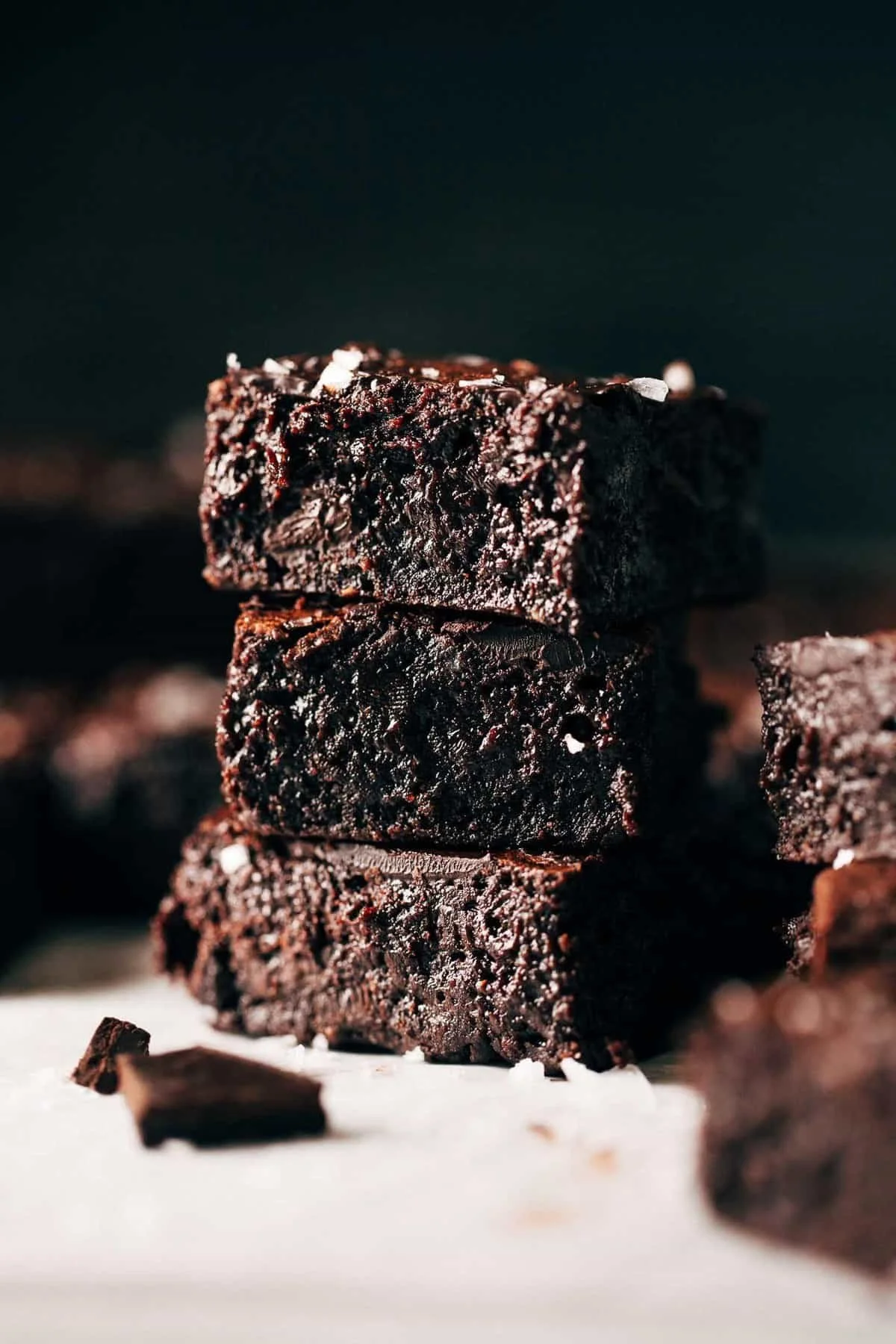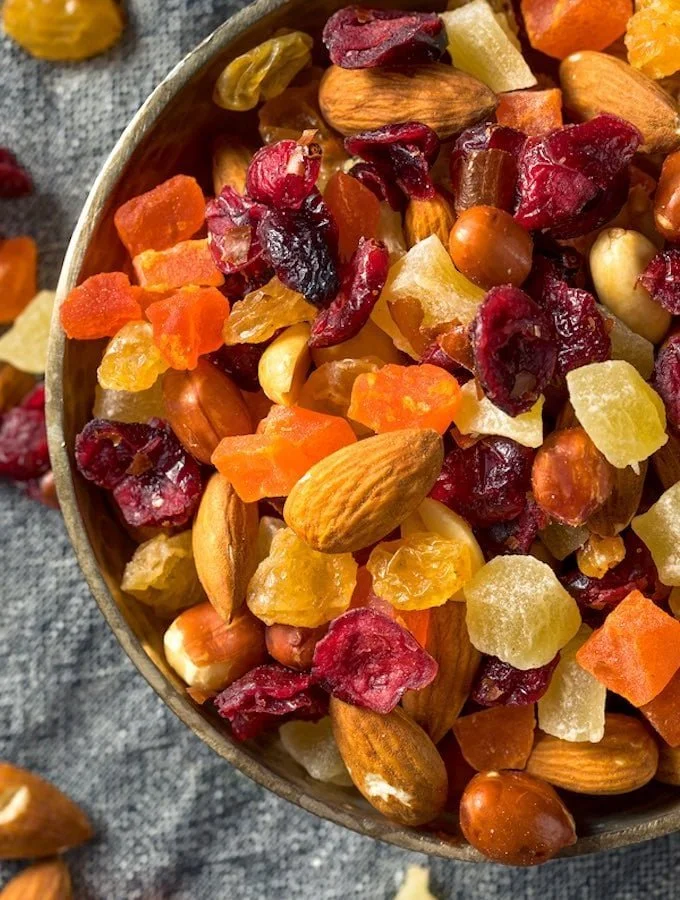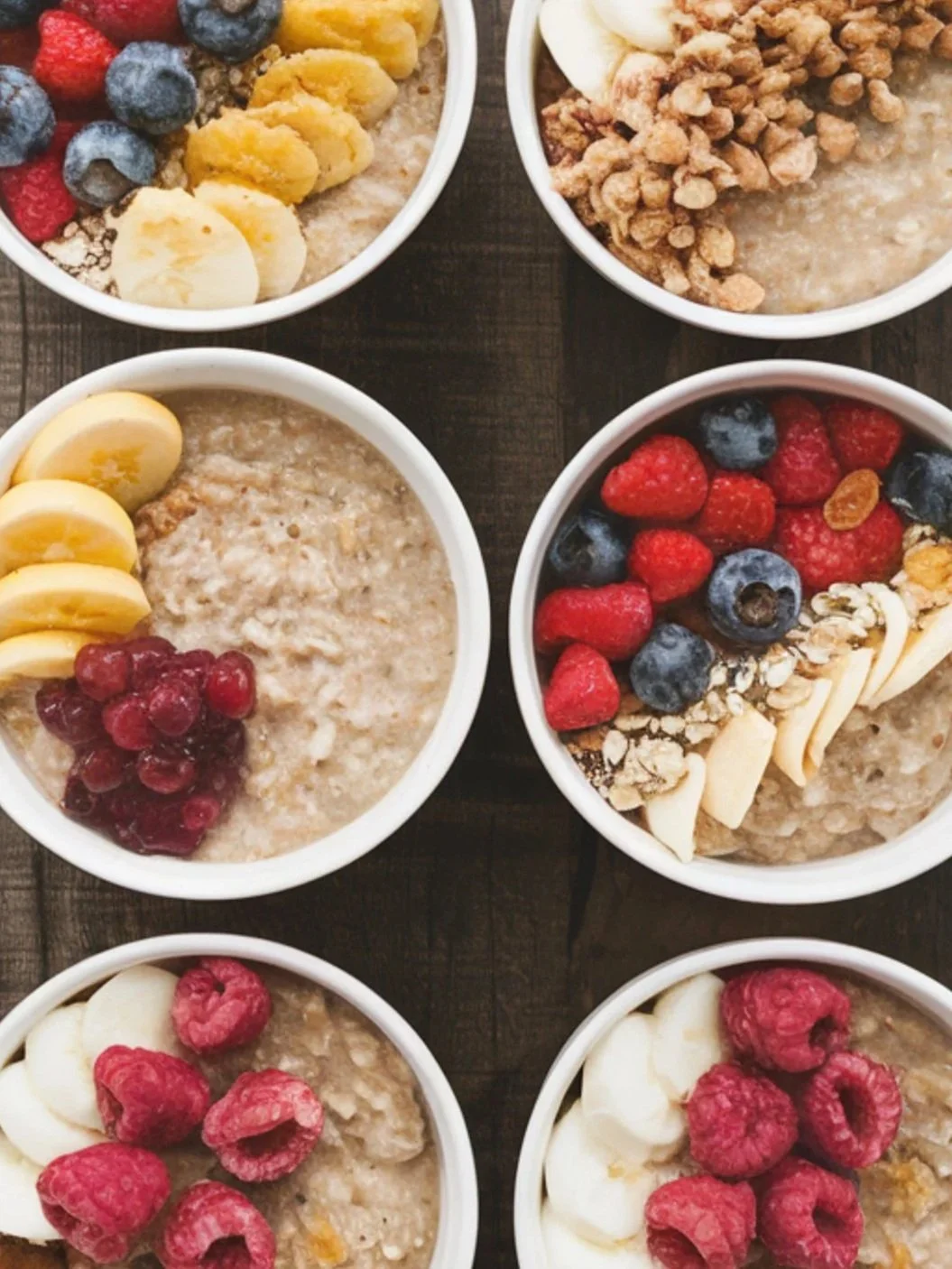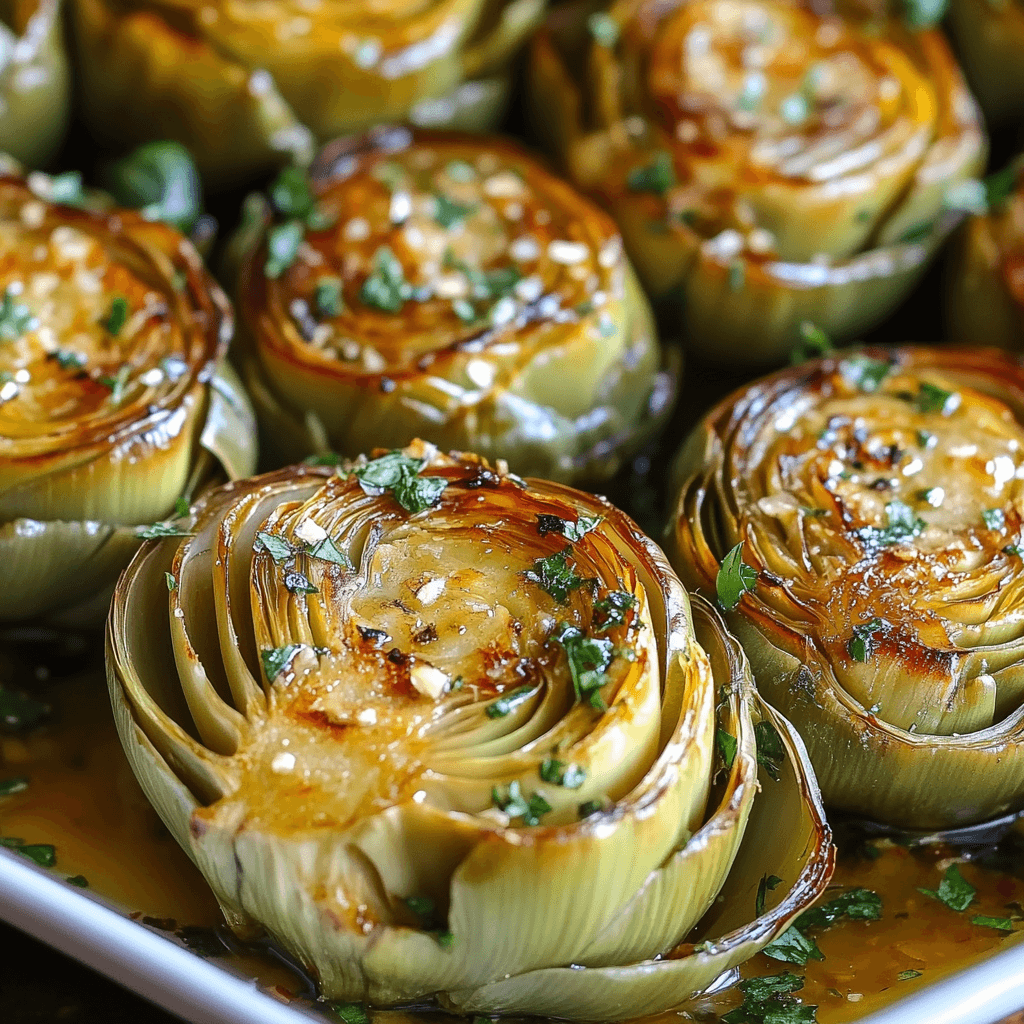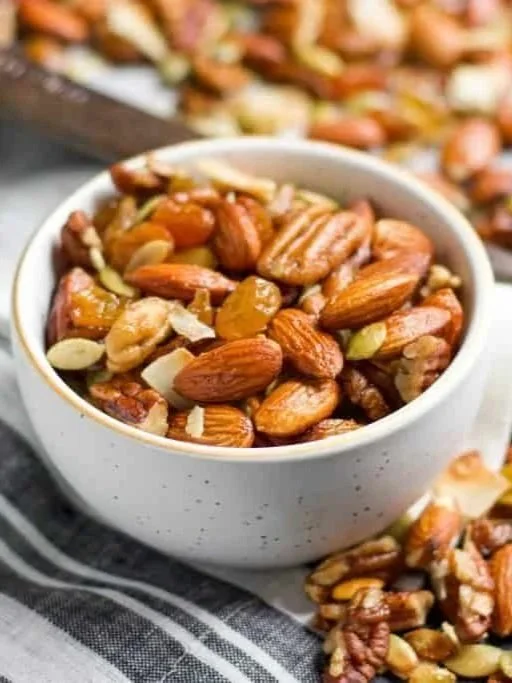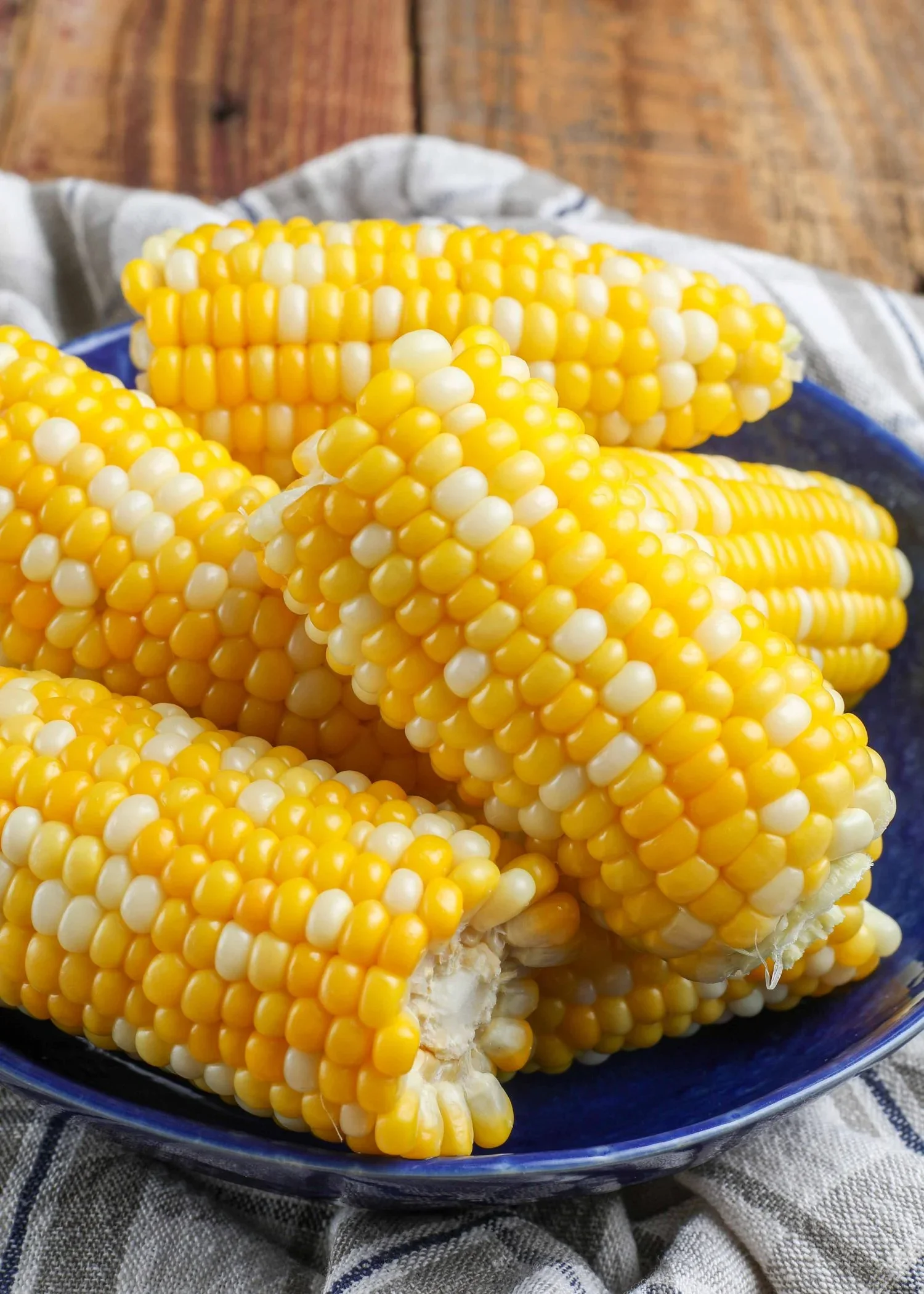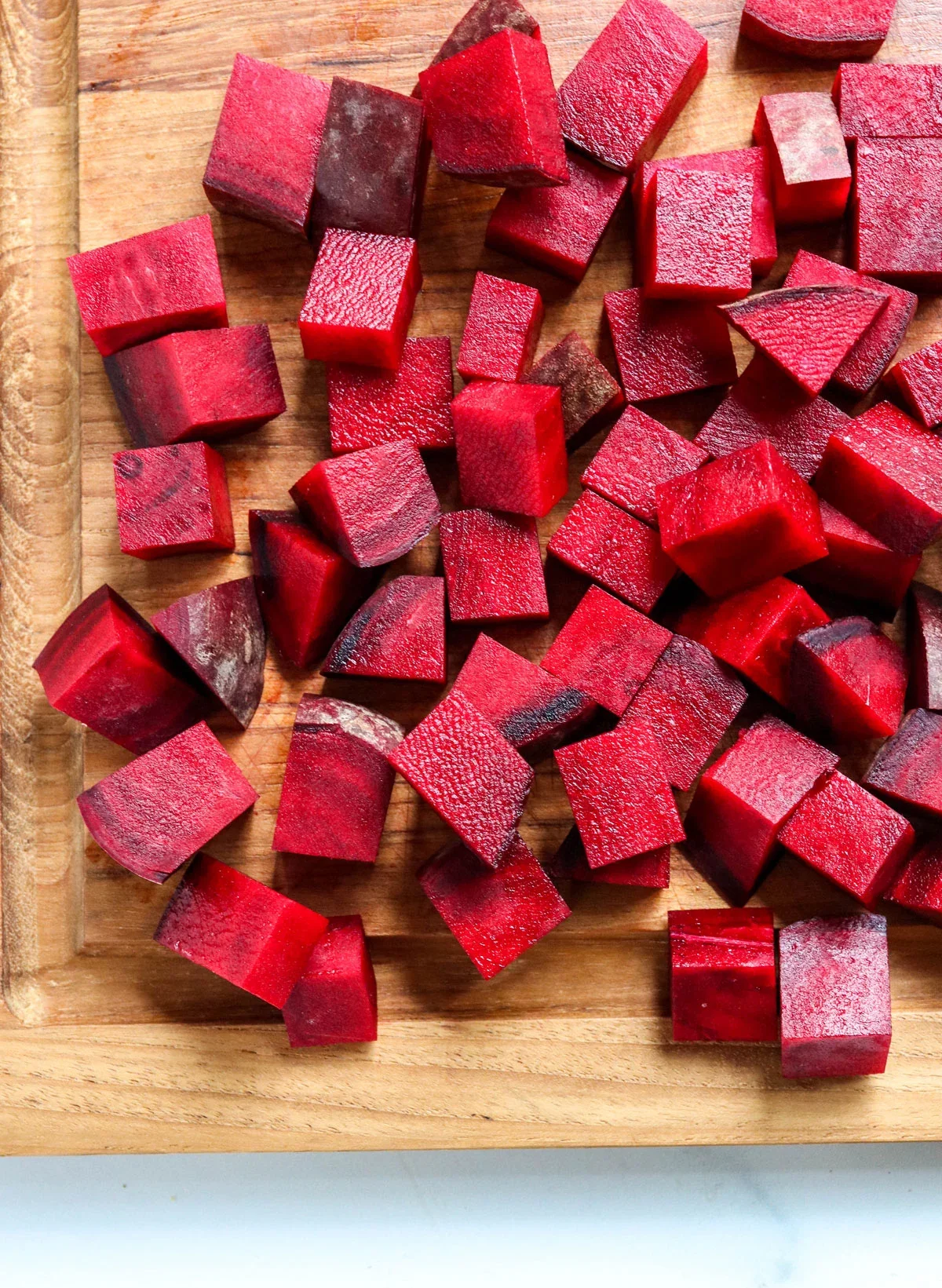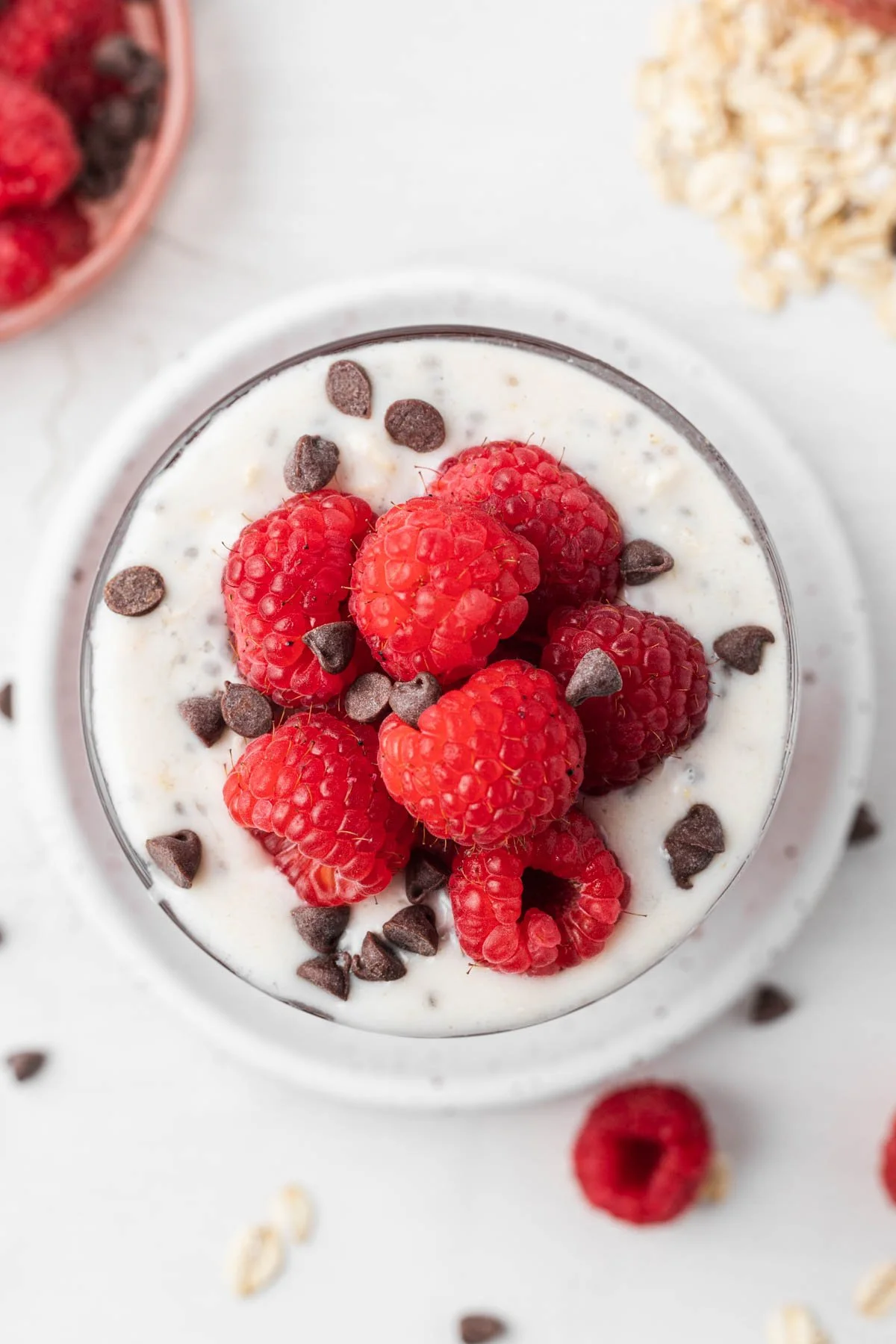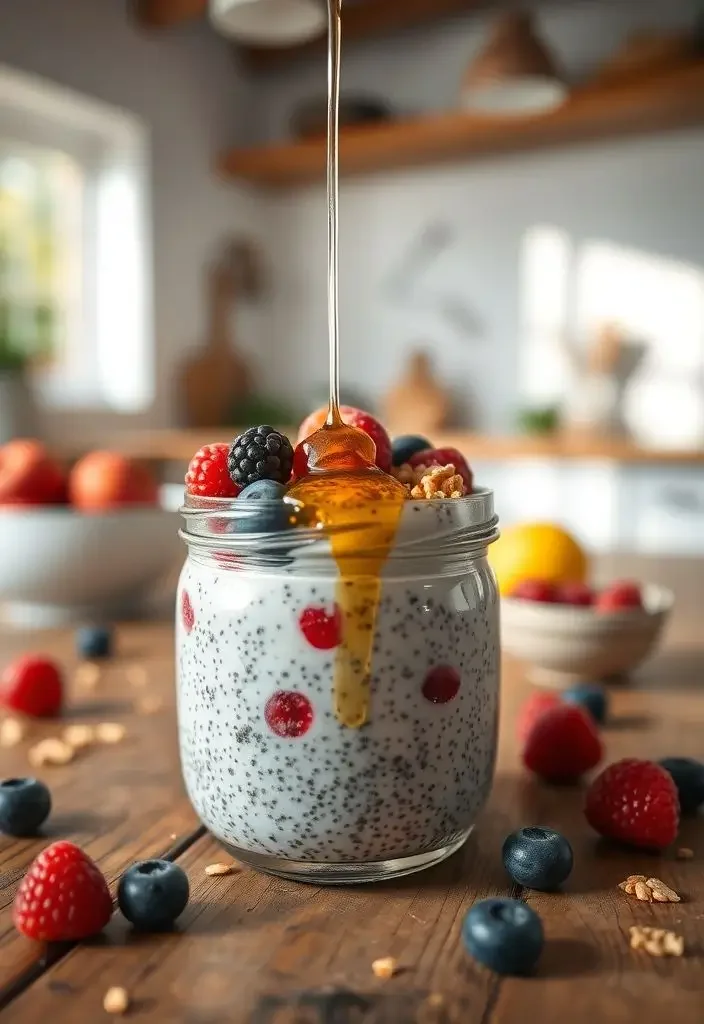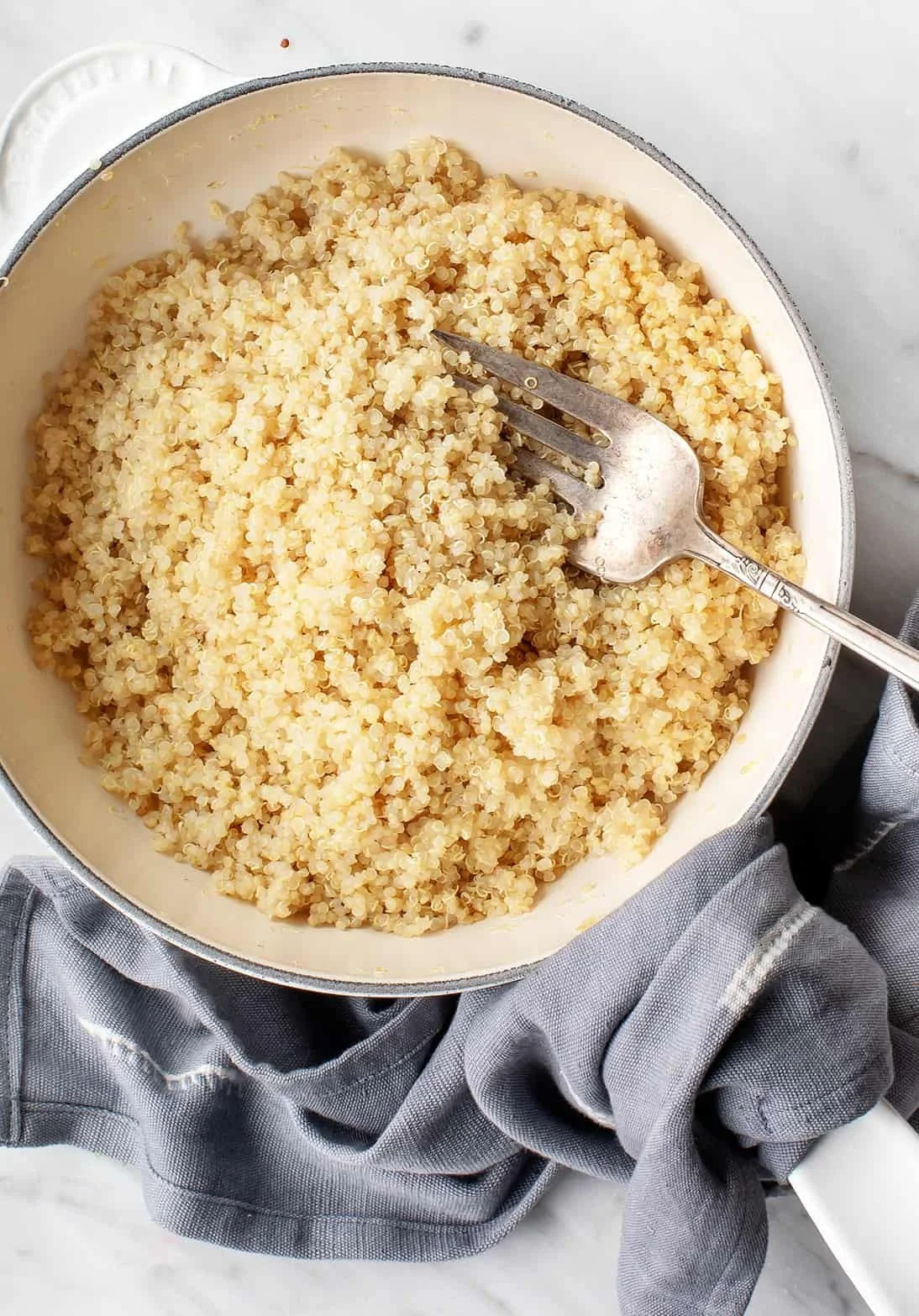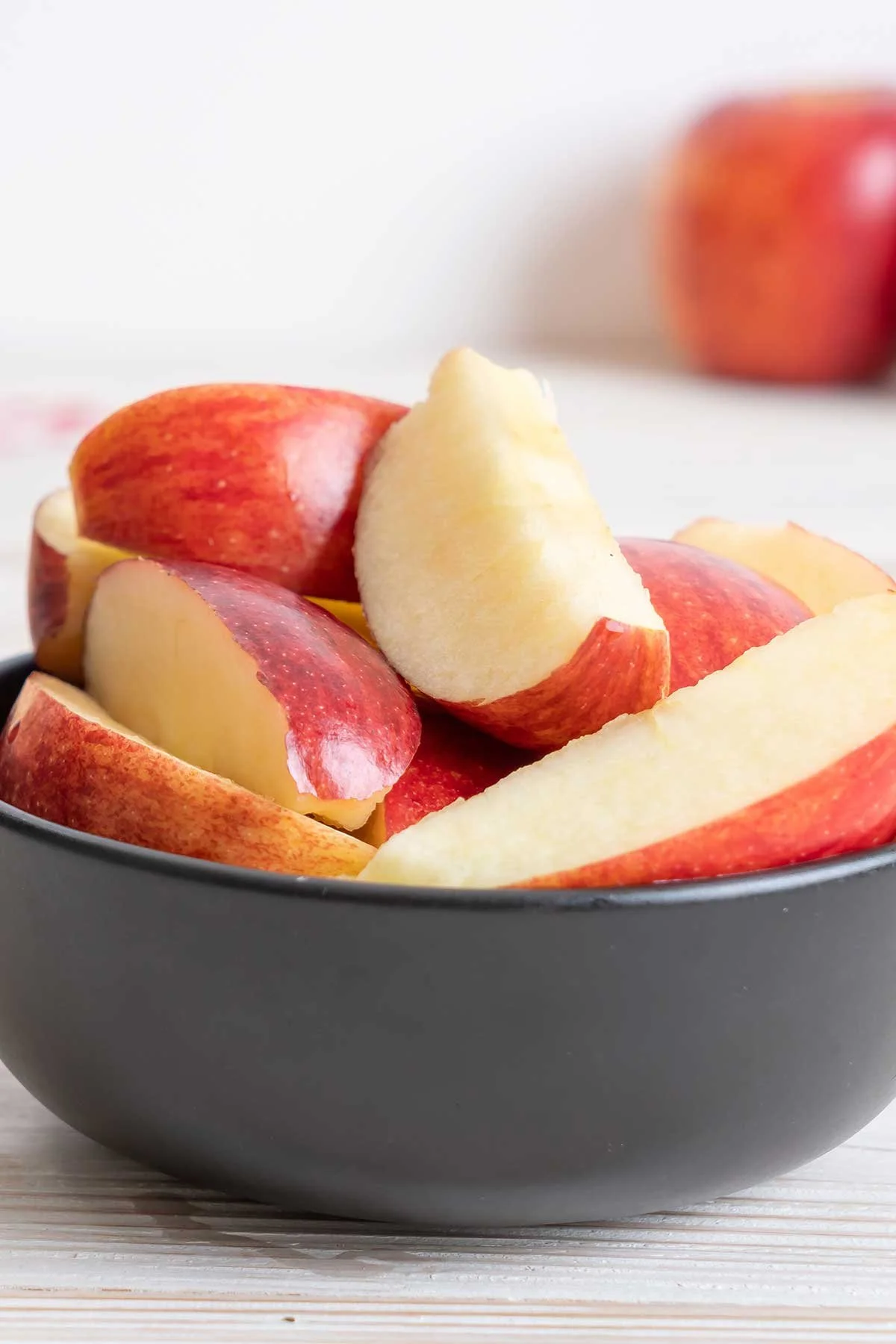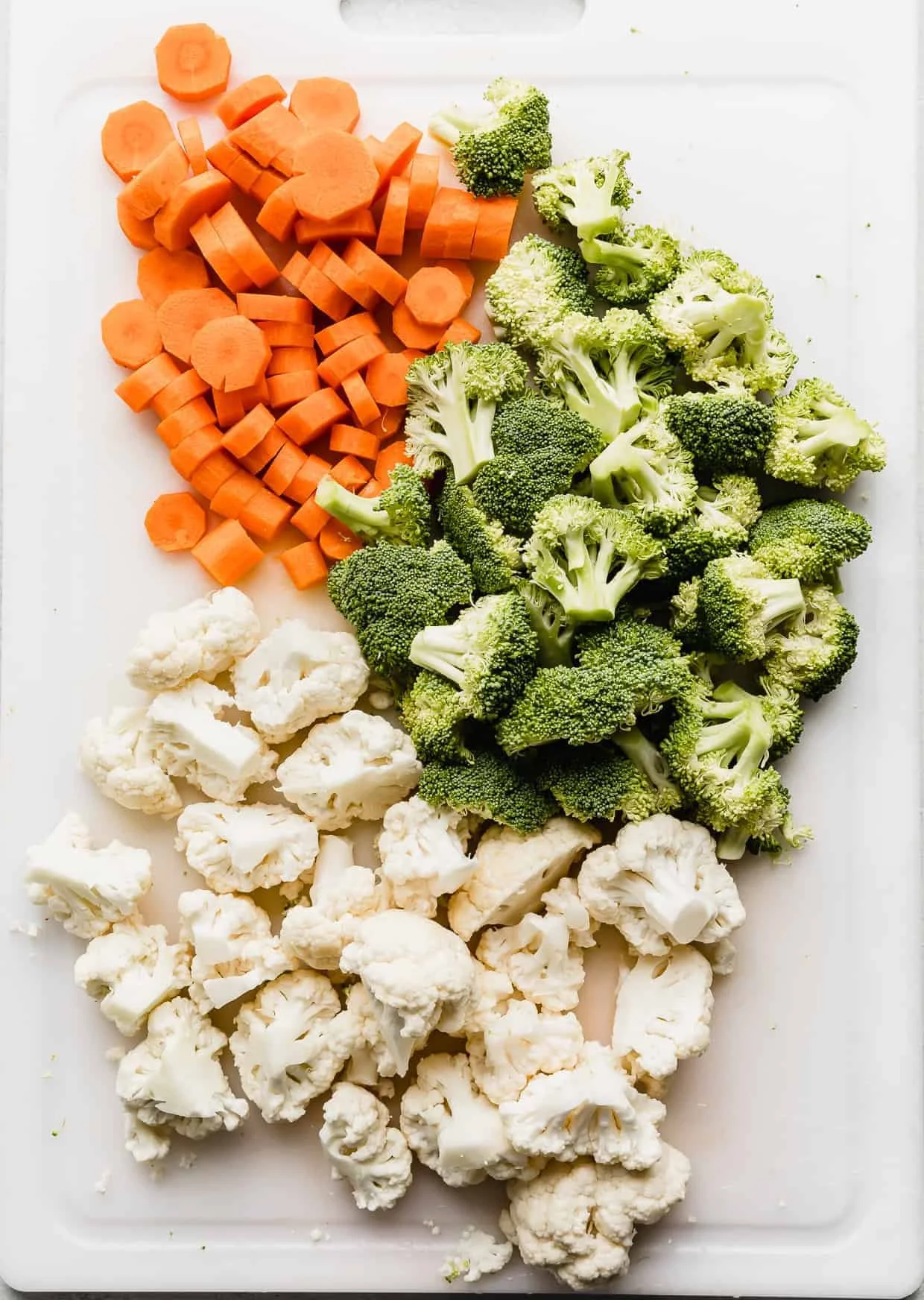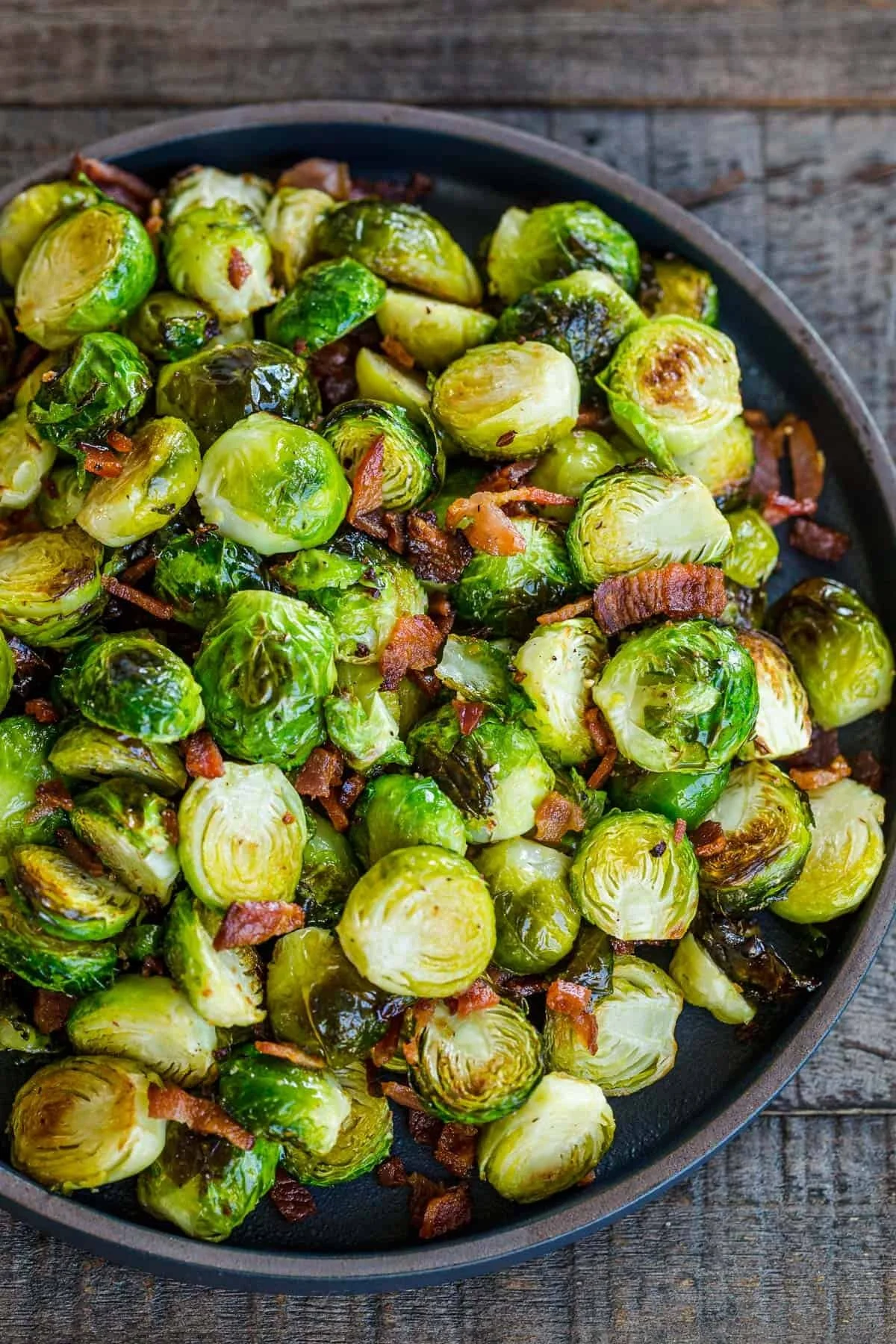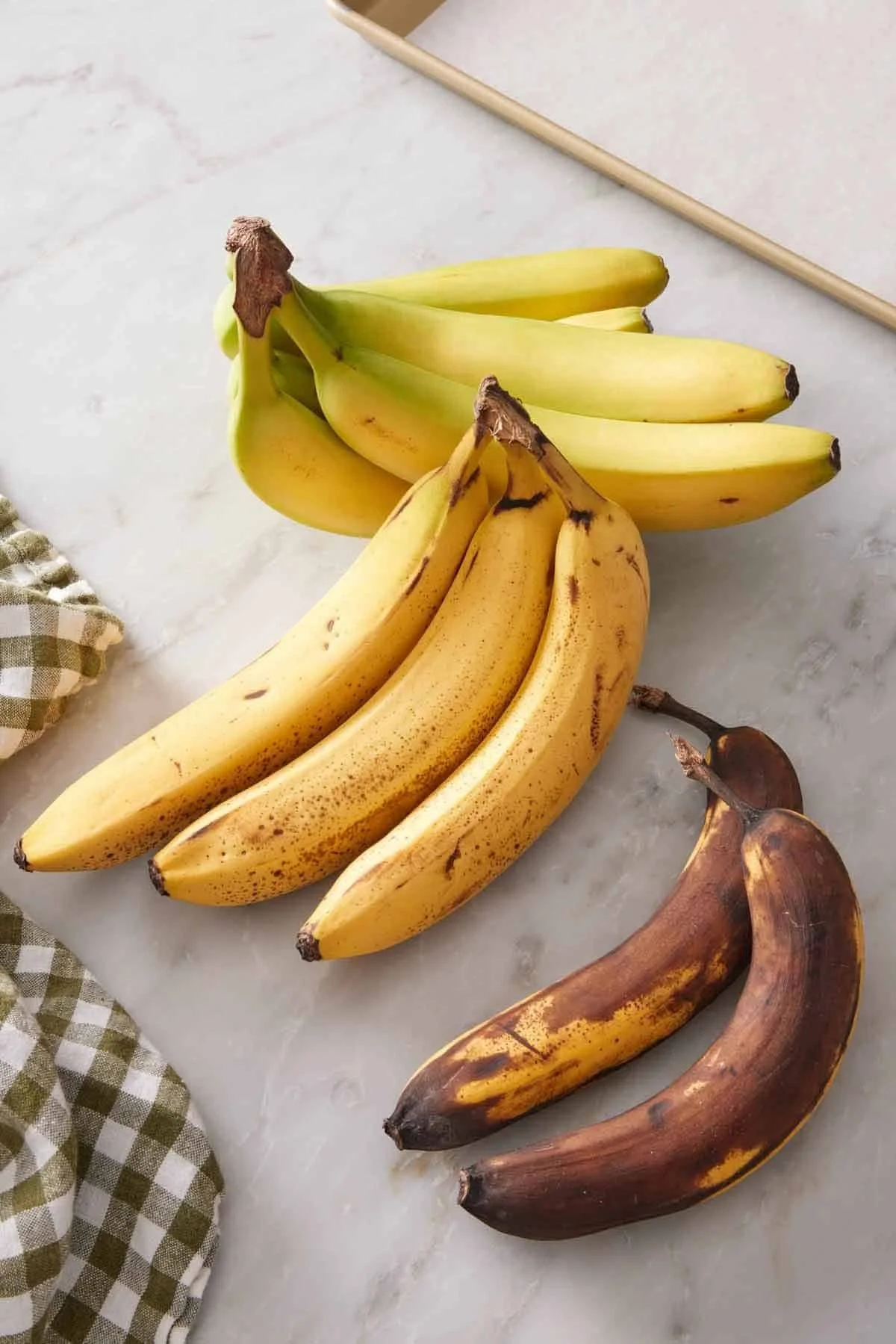Real High Fiber Foods
Getting enough fiber every day is incredibly important for feeling good and fueling your body properly. The daily fiber intake minimum is 25-30 grams of fiber; unfortunately, can be difficult to hit that minimum. In fact, Americans typically only get 10-15 grams of fiber per day on average.
I compiled this list of high-fiber foods to help you know what foods to incorporate into your meals; even included serving-size suggestions and practical tips on how to easily add them to your daily routine!
White Beans
Fiber per serving: 10 grams per ½ cup cooked
White beans, like cannellini, Great Northern, navy, and lima beans, contain a bit more fiber than other bean varieties like black beans or kidney beans. Whether cooked fresh or reheated from the can, beans are rich in fiber and an excellent source of plant-based protein, iron, and magnesium. To boost your fiber intake, you can incorporate beans into your diet by adding them to casseroles, hearty bean soups, dips, and salads.
Lentils, Legumes, and Pulses
Fiber per serving: 8 grams per ½ cup cooked
Lentils, legumes, and pulses are not only versatile but also packed with fiber, plant-based protein, and essential minerals, such as calcium, potassium, folate, zinc, iron, and magnesium. Some well-known lentils, pulses, and legumes include chickpeas, edamame, dry beans, lupins, soybeans, green peas, and split peas. Try increasing your fiber with these fiber powerhouses by incorporating them into stews, chilis, and even salads.
Avocado
Fiber per serving: 7 grams per ½ avocado
Avocados are known for their heart-healthy fats and omega-3 fatty acid content. Additionally, though, they’re also a great source of fiber. Incorporate avocados into your smoothies, salads, and taco toppings for an easy source of insoluble and soluble fiber. I even like to use avocado for making baked goods by using it as a replacement for butter and oil.
Sweet Potatoes
Fiber per serving: 5 grams per medium-large sweet potato
Sweet potatoes are great sources of soluble and insoluble fiber. They also help to improve digestion, are high in several key vitamins, and promote positive gut bacteria in your stomach’s microbiome. Not to mention, they’re used to make all kinds of delicious recipes, including hashes and casseroles and mashed sweet potato can often be used in place of canned pumpkin in dessert bar recipes.
Flaxseeds
Fiber per serving: 4 grams per 2 tablespoons ground
Flaxseeds are often used in the form of ground flaxseed meal, which has the consistency of flour. This allows us to get all of the great nutrition that flaxseeds contain, including fiber and omega-3 fatty acids. Flaxseeds typically make a great addition to baked goods or no-bake treats. They’re also used to make an egg alternative known as a flax egg.
To make a flax egg: Mix 1 tablespoon ground flaxseeds (or flax meal) into 2 to 3 tablespoons of water; let it sit until thickened, then add to the recipe in place of 1 egg. Unfortunately, it’s not a good substitute for recipes with more than 2 eggs.
Dried Coconut
Fiber per serving: 3.5 grams per ¼ cup
Dried coconut is an excellent source of fiber. It is also high in fat called medium-chain triglycerides (MCTs). MCTs are metabolized differently than other fats, making them quick-acting energy boosters. You can use shredded or flaked dried coconut in granola bars and other baked goods.
Dark Chocolate
Fiber per serving: 3 grams per ounce
This may come as a bit of a sweet surprise – dark chocolate is actually a great source of fiber. In fact, a typical 3.5-ounce bar of dark chocolate will provide you with 10 grams of fiber. It’s important to note, too, that the higher the percentage of cacao, the more fiber that dark chocolate contains. You’ll find dark chocolate with cacao amounts as high as 90%, though most people prefer dark chocolate in the range of 60-75% cacao. Enjoy dark chocolate in bar form, chocolate chips, chocolate cups, or even in a chocolate mousse.
Dried Fruit
Fiber per serving: 2-4 grams per ¼ cup
Dried fruit, including raisins, figs, prunes, dried cranberries, dried mango, and more, is a good source of fiber; prunes and figs contain the most fiber, though. Dried fruits are naturally sweet, so I like to reduce or omit the sugar in recipes that contain dried fruit. You can add dried fruit to salads, trail mixes, granolas, and energy bites.
Oats
Fiber per serving: 8 grams per 1 cup cooked
Oats are gluten-free, whole grains that are rich in beta-glucans, which is a type of soluble fiber that aids in digestion and keeps you feeling full longer. They’re known to lower cholesterol and help stabilize blood sugar levels, which can help curb cravings. You should try to opt for steel-cut oats over rolled oats, as steel-cut offer the most fiber. You can enjoy oats in classic oatmeal, overnight oats, baked goods, or even in no-bake treats to get part of your daily dose of fiber in.
Artichokes
Fiber per serving: 7 grams in 1 medium artichoke
If you want to boost your fiber but also ensure you’re eating foods with multiple benefits, artichokes are the way to go. They’re packed with inulin, a prebiotic fiber that can reduce inflammation, improve insulin sensitivity, and support gut health. What’s more, artichokes boast the highest antioxidant content among all vegetables, making them a delicious and effective choice for promoting overall wellness and anti-aging benefits. You can eat artichokes cooked whole or add artichoke hearts to dips and main entree dishes.
Chickpeas
Fiber per serving: 6 grams per ½ cup cooked
Chickpeas, also referred to as garbanzo beans, stand out as a versatile high-fiber food. Thanks to their fiber content, they’re excellent for heart health and also rank low on the Glycemic Index, helping to regulate blood sugar and triglyceride levels. They’re famously used to make hummus or a tasty layered dip, which is one of my favorite dishes to take to group gatherings.
Almonds
Fiber per serving: 5 grams per ¼ cup whole almonds
Almonds are one of the highest-fiber nuts that you can eat. Additionally, they’re full of immunity-boosting antioxidants, as well as vitamin E to help boost skin health. Reach for whole almonds for snacking, add chopped almonds to a charcuterie board, or even try incorporating almond flour when it comes to baked goods to get a small fiber boost.
Corn
Fiber per serving: 4 grams per 1 cup kernels
Corn is a great fiber-rich food choice that is also rich in B vitamins and a specific type of antioxidant known as eye-protective carotenoids. You can eat corn cooked or boiled on the cob, as well as use canned or frozen corn as the base for salads or an additional element for soups and chowders.
Beets
Fiber per serving: 4 grams per 1 cup cooked
Beets: You either love them or you hate them – or maybe you even have a love-hate relationship with them. No matter what your opinion is, the fact is beets are high in levels of dietary fiber content and provide many other health benefits for your overall health. You can enjoy beets in the form of juice, dehydrated beet powder, or as an addition to your salads and dips.
Broccoli
Fiber per serving: 3 grams per 1 cup
Broccoli is one of the healthiest foods on the planet. It contains fiber, high amounts of vitamins C and K, and several essential minerals. If you’re looking to add broccoli to a veggie tray, I recommend blanching it first to remove some of the bitterness while also brightening the color and flavor. You can also add broccoli to a casserole or a sheet-pan roasted veggie dish.
Wild Blueberries
Fiber per serving: 3 grams per ½ cup
By eating wild blueberries, you can actually get 25% of the daily minimum recommended intake of fiber just by eating a cup of delicious wild blueberries. They contain 72% more fiber than regular blueberries. Try incorporating wild blueberries into your smoothies, oatmeal, yogurt, or baked goods.
Raspberries
Fiber per serving: 8 grams per 1 cup
Raspberries are the super fruit of choice when it comes to fiber, as they contain more than any other type of berry. Not only are they rich in fiber, but they’re also a great source of potassium – which helps lessen the effect of a high-sodium diet on your blood pressure – and flavonoids, a powerful type of antioxidant. You can add fresh or frozen raspberries to smoothies, salads,baked goods, and sauces for a burst of flavor and nutrition.
Chia Seeds
Fiber per serving: 7 grams per 2 tablespoons
Speaking of insoluble and soluble fiber, chia seeds are another great source of these specific types of fiber and are full of antioxidants. Add some chia seeds to your oatmeal, salads, baked goods, or even turn them into a delicious chia pudding.
Quinoa
Fiber per serving: 5 grams per 1 cup cooked
Quinoa is one of my favorite gluten-free whole grains. It’s a complete source of protein, meaning that it contains all 9 of the amino acids necessary for our nutritional needs and that our bodies don’t create fully on their own. Plus, it’s a great source of other important nutrients like iron, calcium, manganese, magnesium, and copper. Try incorporating quinoa into your salads, casseroles, and even burgers.
Apples
Fiber per serving: 5 grams per large apple
An apple a day keeps the doctor away, and it’s also a great option for increasing daily fiber content. The fiber in apples is largely in the form of pectin, which is known to help prevent cholesterol buildup in blood vessels and reduce constipation. You can pair apples with nut butter of your choice, as well as incorporate them into your salads or a crumble.
Carrots
Fiber per serving: 4 grams per 1 cup
Carrots are a good source of fiber and contain high amounts of vitamin A and cell-protective antioxidants. You can enjoy carrots raw or cooked, as well as in more creative ways like in the form of carrot fries or in carrot cake baked oatmeal.
Brown Rice
Fiber per serving: 3.5 grams in 1 cup cooked
Brown rice is a true whole grain, which means that it’s just as good a source of fiber as barley or whole wheat. It is also a good source of magnesium, which makes it a great option for heart health. Try using brown rice in a curry or casserole to easily incorporate it into recipes — you can also opt for eating plain brown rice, too.
Brussels Sprouts
Fiber per serving: 3 grams per 1 cup
In addition to being a terrific source of fiber, brussels sprouts contain high amounts of vitamins A, C, and K, which all promote good heart health. In addition, brussels sprouts are super versatile in the kitchen. You can cook them on the stovetop, sheet pans, and in air fryers. They also add a wonderful additional layer of flavor when thinly sliced or shaved into salads.
Bananas
Fiber per serving: 3 grams per 1 medium banana
Most people know bananas for the amount of potassium they provide. However, bananas are also incredibly rich in two special types of fiber: resistant starch and pectin. Resistant starch is a prebiotic that helps grow the beneficial bacteria in your gut, which is prime for everything from your immunity to your skin health. Pectin is beneficial for promoting bowel movement and digestive system health. You can eat bananas plain, add them to a smoothie, or even use mashed bananas as a replacement for fat in recipes, as well as a way to add moisture and texture to baked goods.
Frequently Asked Questions
What’s the best way to increase your fiber intake?
While many doctors will prescribe a fiber supplement, such as Metamucil, one of the most natural ways to increase your fiber content is to add more plant-based foods to your diet.
Plant-based foods, such as whole grains, fruits, and cruciferous vegetables, contain many different types of beneficial fibers. They also boast other health benefits, including high amounts of vitamins, minerals, and antioxidants.
When starting to add more fiber to your diet, make sure you’re drinking enough water and slowly implementing the diet change over one to two weeks.
What are the benefits of a high-fiber diet?
Research shows that dietary fiber that you get from real foods has many health benefits, including:
• Consistent and better digestion, including less constipation
• A healthy gut microbiome for disease-fighting immunity
• Lowered blood pressure and regulated blood sugars
• Reduced cholesterol levels and triglycerides
• Lowered risk of heart disease, type 2 diabetes, and some cancers
How much is too much fiber per day?
The Academy of Nutrition and Dietetics, the American Heart Association, the USDA Dietary Guidelines, and the Mayo Clinic all recommend that adults consume a minimum of 25 grams of fiber daily.
However, more than 70 grams of fiber per day is not advised, particularly when consumed over a short period of time. This amount of fiber may cause side effects such as bloating, gas, and cramping as your body works to digest the fiber.
Aim for 14 grams of fiber per every 1,000 calories you consume each day. For example, someone who eats a roughly 2,000-calorie diet should aim for about 28 grams of fiber.
How can I get 30g of fiber a day?
Here’s an example of a daily meal plan that would provide you with 30-32 grams of fiber.
• Breakfast: 1 cup oatmeal with ⅓ cup raspberries and 1 tablespoon peanut butter = 8 g fiber
• Lunch: 1 ⅓ cups beef and bean chili with ¼ cup diced avocado = 10 to 12 g fiber
• Snack: 1 medium apple with 2 tablespoons peanut butter = 7 g fiber
• Dinner: 1 chicken breast with 1 cup roasted vegetables = 5 g fiber
Daily Total = 30 to 32 grams of fiber


